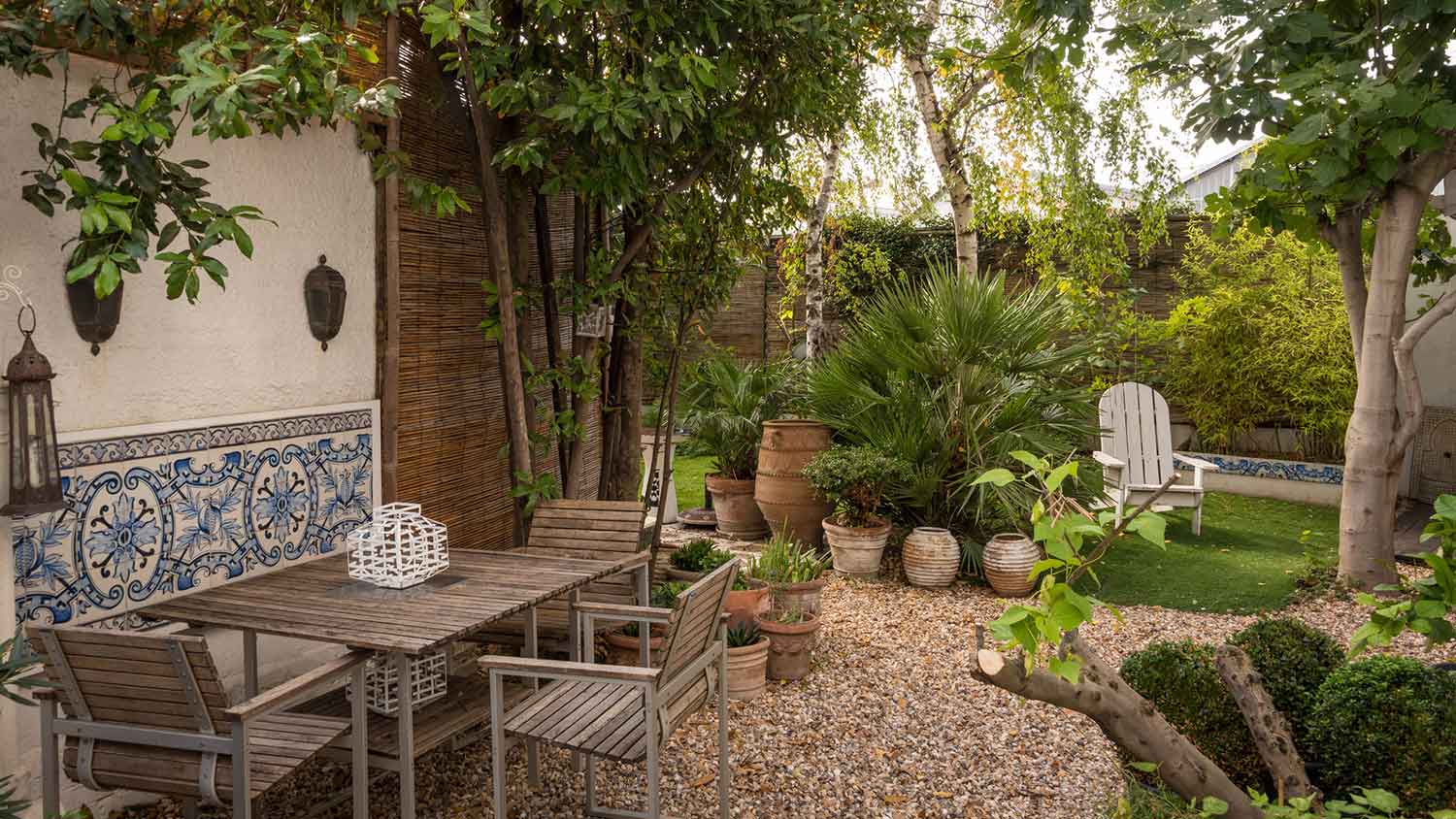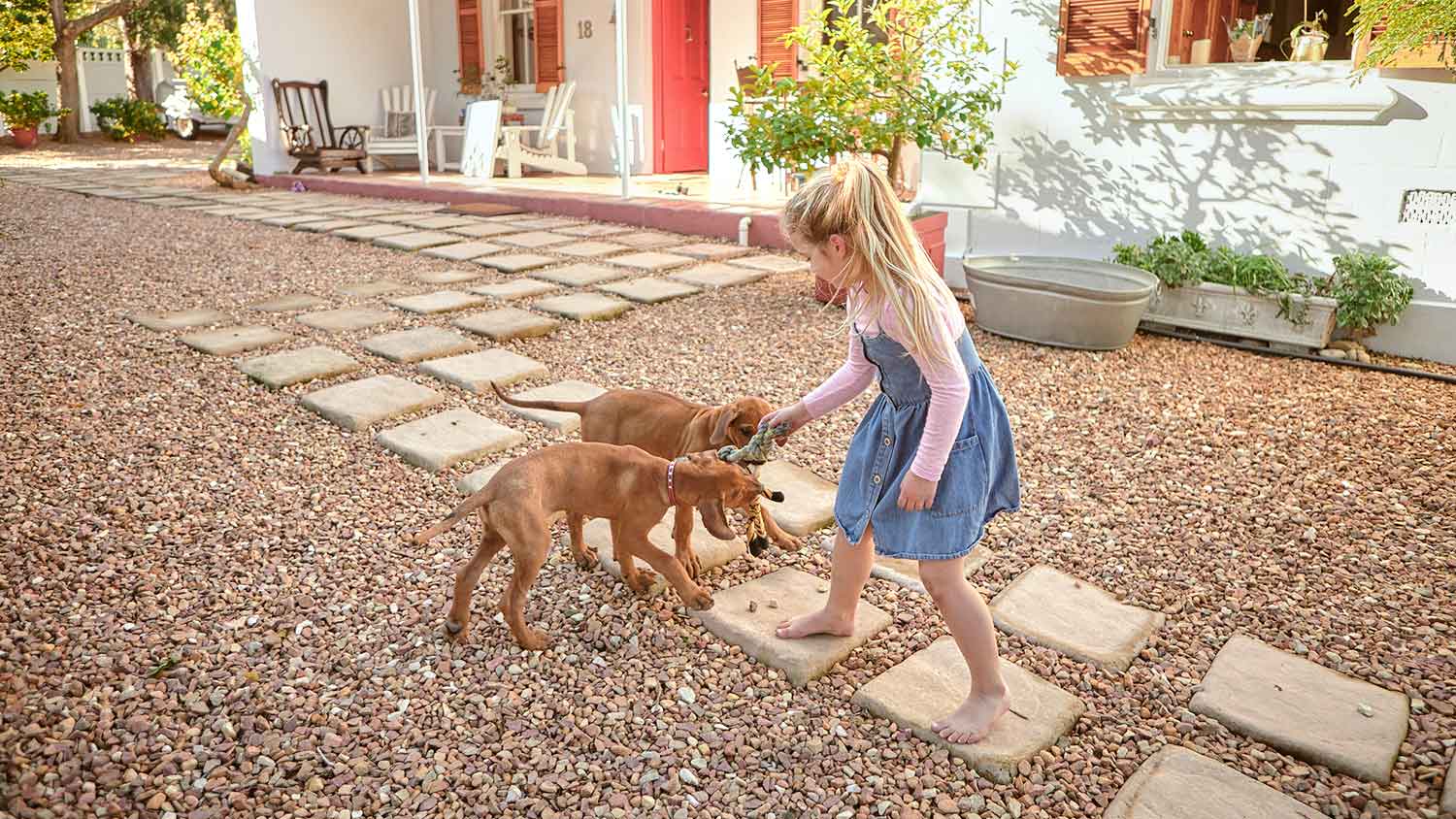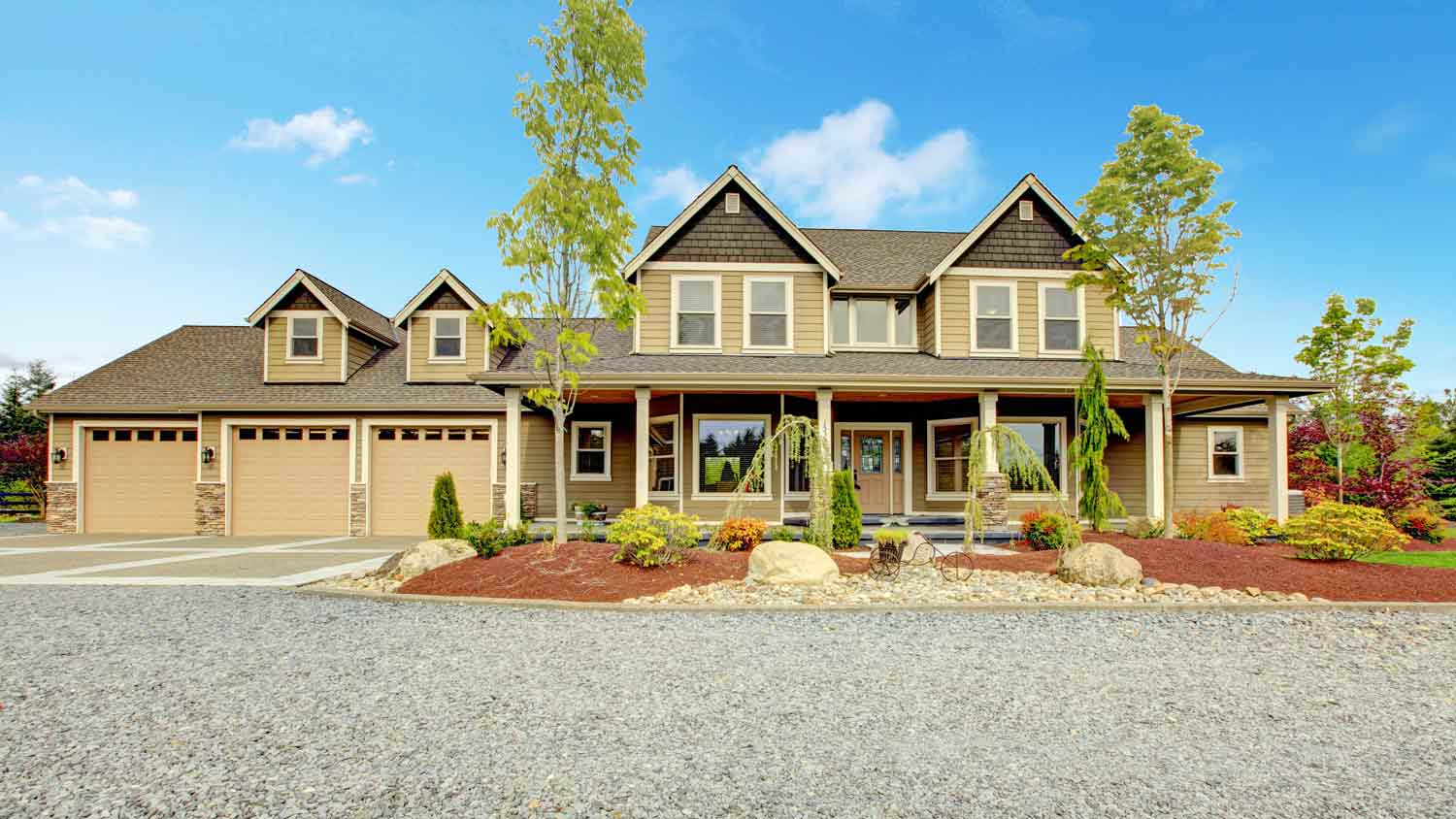
Discover the average gravel pad for shed cost, including installation, materials, and tips to save money. Get a detailed breakdown to plan your shed foundation project.
Put a damper on driveway dust with these tips


To reduce dust from your gravel driveway, drive slowly, water your driveway, and add windbreaks.
You can also spray soybean oil soapstack, apply dust-grabbing salts, and install permeable pavers to reduce dust.
Routine maintenance, including raking, filing, and grading, as well as a new top layer, can also help.
Your expansive, charming, and rustic gravel driveway was your home’s perfect welcome sign—at first. Now, it’s just a direct-to-door pathway for dust clouds. Gravel driveways are a popular choice for many homeowners, but they generate more and more dust as they sit. If you’re tired of wiping dirt from your windows and windshields with every pass, keep reading. Here are eight tips for how to reduce dust from your gravel driveway.

One of the easiest and least expensive ways to minimize dust from your gravel driveway (hint: it’s free!) is to reduce your driving speed. Lowering your speed by even a few miles per hour can greatly reduce the amount of dust you leave behind.
Damp driveways produce less dust. Watering the driveway, especially if you live in humid environments, will help control those pesky fly-away particles.
Hose: Use once every few days for smaller driveways in wetter climates.
Sprinkler system: Use for longer driveways in drier climates. However, this can be a water-intensive option, so you may want to add a sprinkler timer or controller to your system as a way to conserve water.
Dust is created as the gravel degrades from erosion and cars pass over it. To help block the wind that spreads the particles, install fences, hedges, or other plants along the driveway. Living plant roots also hold soil together, ultimately reducing the amount of loose dirt.
For many years, homeowners sprayed gravel with petroleum oil-based products to keep gravel dust at bay, but this is detrimental to ecosystems. Soybean oil soapstock, a byproduct of soybean oil, offers a similar effect to spraying on petroleum-based products, but it’s a much more environmentally friendly solution. Other pros of soybean oil include:
Can reduce agricultural waste.
Doesn’t need to be combined with water; in fact, it’s more effective when applied on its own.
Is biodegradable, non-toxic to plants and animals, and does not pollute waterways.
For coverage, apply 1/4 gallon per square yard of the driveway every three to four months. For best results, apply when the outdoor temperature is 75°F or higher to ensure faster absorption.
Salts, when combined with water, are one of the most effective ways to reduce dust from a gravel driveway. Common dust suppressants like calcium chloride and lignin sulfonate keep driveways damp by pulling moisture from the air, which helps adhere tiny gravel particles from flying up into the air.
These salts are pungent and need to be applied with precision. You might consider hiring an experienced contractor to deposit the salts carefully and evenly. But keep in mind that using salts to reduce dust is not recommended for people living near water sources like rivers or lakes, because it can pollute your water and make it unsafe to drink.
Permeable pavers are a pricier but long-term solution to gravel dust. Because they are, well, permeable, they eliminate standing water—a top dust-producing culprit once the water evaporates and dries.
In addition to reducing dust, pavers are also environmentally friendly. To install, you’ll fill low spots in the driveway with gravel, level the driveway, then install the pavers to lock the gravel in place.

Gravel driveway maintenance requires regular raking, filling, and grading to keep your path looking smooth and level. Fix minor potholes before they become bigger, dust-whipping divots. Fill the base with large gravel, the middle with medium-sized gravel, then top off the hole with smaller gravel that matches the rest of the driveway.
Use a tractor (or hire local a gravel contractor) to grade the driveway at least once per year to help provide proper water drainage.
Driveways with thicker layers of gravel may produce less dust. You can reduce the amount of gravel erosion, which later becomes dust, by adding a fresh top layer to your gravel driveway.
Layers: A good gravel driveway will typically include at least three layers of rocks, a sub-base layer, the base layer, and a surfacing layer.
Shapes: Opt for irregularly shaped stones to prevent them from compacting, which will allow water to properly drain.
Types of rocks: Vary the types of rocks and sizes to help reduce dust and improve drainage, such as crushed stone, pea gravel, and Jersey Shore gravel
From average costs to expert advice, get all the answers you need to get your job done.

Discover the average gravel pad for shed cost, including installation, materials, and tips to save money. Get a detailed breakdown to plan your shed foundation project.

Discover the average gravel driveway cost, including price ranges, installation factors, and tips to help you budget for your new gravel driveway.

Pea gravel is a budget-friendly, low-maintenance option for landscaping, pathways, and driveways. Learn about its pros and cons, best uses, and top alternatives to see if it’s the right choice for your project.

Find out the best types of landscaping rocks for your home’s next outdoor project, from solving drainage problems to installing retaining walls and terraces.

Trying to choose the right gravel? Use this guide to gravel sizes to determine what dimensions will best suit your landscaping, driveway, or foundation project.

Wondering whether to use large or small gravel? This guide breaks down the key differences based on factors like drainage, stability, and maintenance to help you choose the right size for your project.